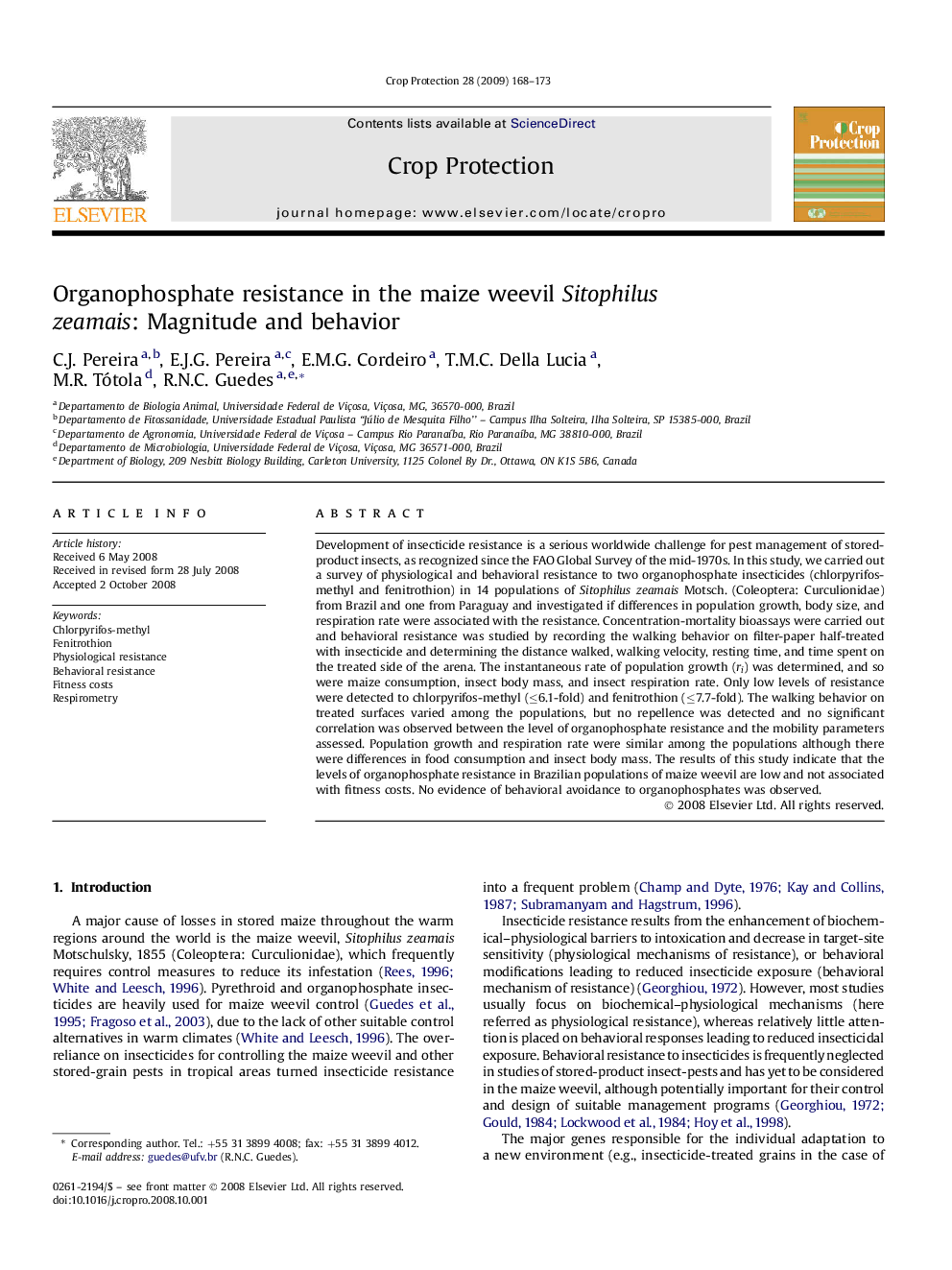| Article ID | Journal | Published Year | Pages | File Type |
|---|---|---|---|---|
| 4507623 | Crop Protection | 2009 | 6 Pages |
Abstract
Development of insecticide resistance is a serious worldwide challenge for pest management of stored-product insects, as recognized since the FAO Global Survey of the mid-1970s. In this study, we carried out a survey of physiological and behavioral resistance to two organophosphate insecticides (chlorpyrifos-methyl and fenitrothion) in 14 populations of Sitophilus zeamais Motsch. (Coleoptera: Curculionidae) from Brazil and one from Paraguay and investigated if differences in population growth, body size, and respiration rate were associated with the resistance. Concentration-mortality bioassays were carried out and behavioral resistance was studied by recording the walking behavior on filter-paper half-treated with insecticide and determining the distance walked, walking velocity, resting time, and time spent on the treated side of the arena. The instantaneous rate of population growth (ri) was determined, and so were maize consumption, insect body mass, and insect respiration rate. Only low levels of resistance were detected to chlorpyrifos-methyl (â¤6.1-fold) and fenitrothion (â¤7.7-fold). The walking behavior on treated surfaces varied among the populations, but no repellence was detected and no significant correlation was observed between the level of organophosphate resistance and the mobility parameters assessed. Population growth and respiration rate were similar among the populations although there were differences in food consumption and insect body mass. The results of this study indicate that the levels of organophosphate resistance in Brazilian populations of maize weevil are low and not associated with fitness costs. No evidence of behavioral avoidance to organophosphates was observed.
Related Topics
Life Sciences
Agricultural and Biological Sciences
Agronomy and Crop Science
Authors
C.J. Pereira, E.J.G. Pereira, E.M.G. Cordeiro, T.M.C. Della Lucia, M.R. Tótola, R.N.C. Guedes,
